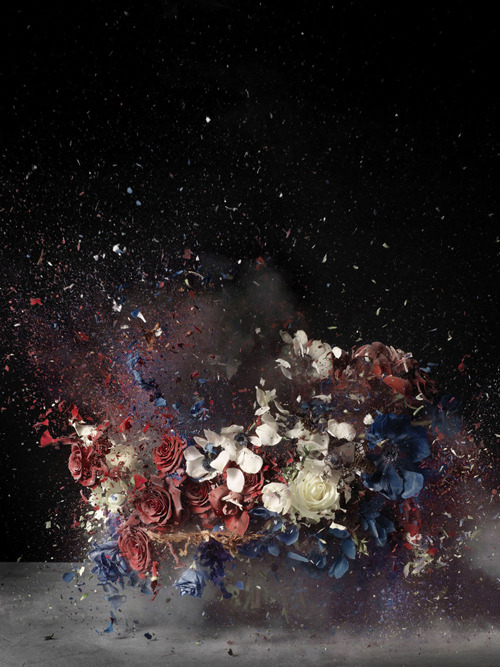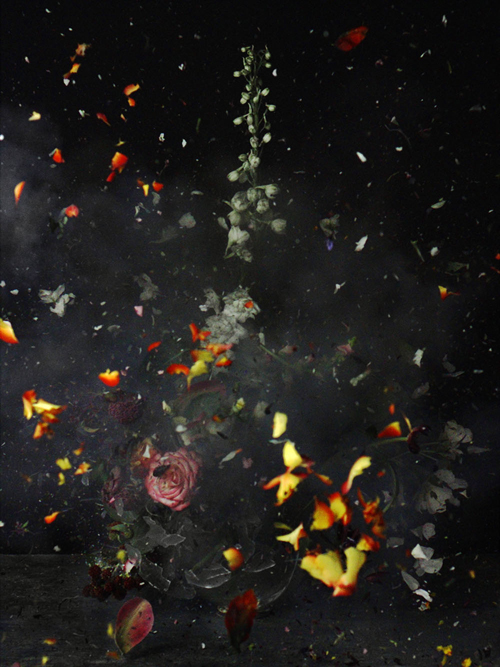Ori Gersht
Monday, 27 February 2012
Work from Blow Up and Time After Time.
“The large-scale photographs entitled Blow Up depict elaborate floral arrangements, based upon a 19th Century still-life painting by Henri Fantin-Latour, captured in the moment of exploding. Gersht´s compositions are literally frozen in motion, a process dependent on the ability of the advanced technology of photography to freeze-frame action. This visual occurrence, that is too fast for the human eye to process and can only be perceived with the aid of photography, is what Walter Benjamin called the ‘optical unconsciousness’ in his seminal essay ‘A Short History of Photography’.
Flowers, which often symbolise peace, become victims of brutal terror, revealing an uneasy beauty in destruction. This tension that exists between violence and beauty, destruction and creation is enhanced by the fruitful collision of the age-old need to capture “reality” and the potential of photography to question what that actually means. The authority of photography in relation to objective truth has been shattered, but new possibilities to experience reality in a more complex and challenging manner have arisen.
The small scale of the works in the series Time after Time [2007] references a Dutch still life painting tradition in which elaborate flower compositions were painted for domestic settings. These paintings often displayed flowers that bloomed at different times of the year, thus creating distorted images of reality and emphasizing the true purpose of such a painting: to display the wealth of its owners.” – Mummery and Schnelle


